Whole-wheat flour
About the ingredient whole-wheat flour. Including 1,379 recipes with whole-wheat flour, nutrition data, and where to find it.
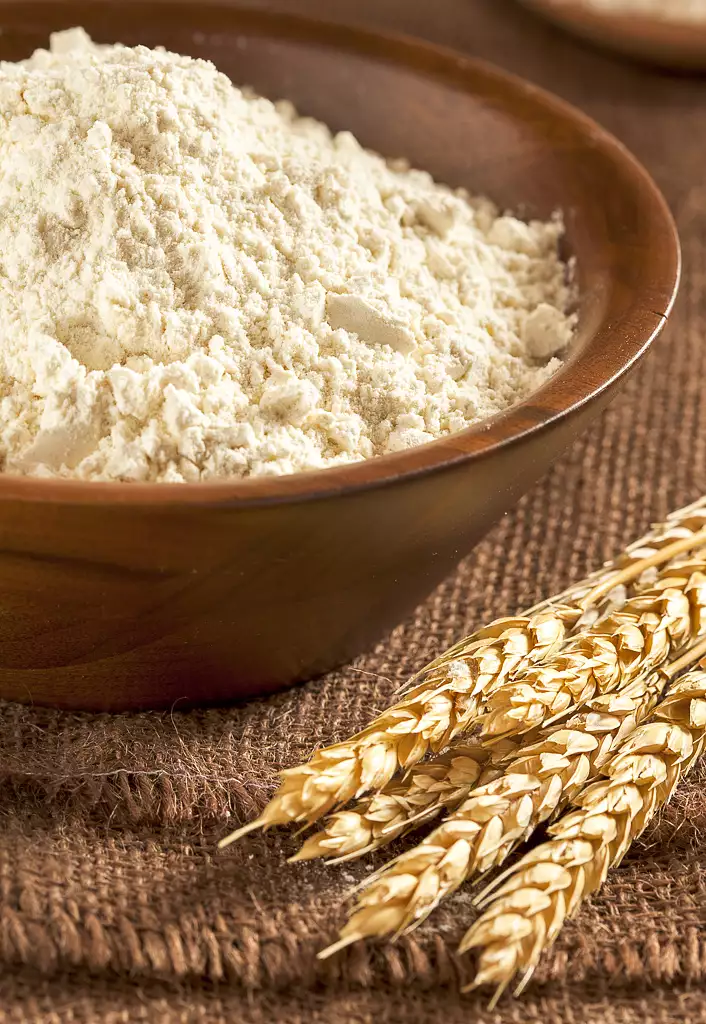
Contents
What is whole-wheat flour?
Whole wheat flour is a powdery substance derived by grinding or mashing the wheat's whole grain.
It is used in baking but typically added to other "white" flours to provide nutrients (especially fiber and protein), texture, and body to the finished product.
Whole wheat flour is more nutritious than refined white flour, although in a process called food fortification, some micronutrients are added back to the white flour (required by law in some jurisdictions). Fortified white wheat flour does not, however, contain the macronutrients of the wheat's bran and germ (especially fiber and protein). Whole wheat is a good source ofcalcium, iron, fiber, and other minerals like selenium.
Shelf life
Whole wheat flour has a shorter shelf life than white flour. The higher oil content contained in the bran of the wheat, as the higher oil content leads to rancidity with longer term storage. It is also more expensive, due to its relative unpopularity and the inclusion of the wheat bran and wheat germ, which producers of white flour can sell separately.
To avoid rancidity store your whole grain flour tightly sealed in the freezer.
Typically, whole wheat flour is not the main ingredient of baked goods, as it adds a certain "heaviness" which prevents baked goods from rising as well as white flours.
This adds to the cost per volume of the baked item as it requires more flour to obtain the same volume, due to the fewer and smaller air pockets trapped in the raised goods. Thus, many baked goods advertised as whole wheat are not entirely whole wheat; they may contain some refined white wheat, as long as the majority of the wheat used is whole wheat.
Nevertheless, it is possible to make a high-rising, light loaf of 100% whole wheat bread, so long as one increases the water content of the dough (the bran and germ in whole wheat absorb more water than plain white flour), kneads the dough for a longer period of time to develop the gluten adequately, and allows for a longer rise before shaping the dough.
Some bakers let the dough rise twice before shaping. The addition of fats, such as butter or oil, and milk products (fresh milk, powdered milk, buttermilk, yogurt, etc.) can also greatly assist the rising process.
Nutrition
Nutrition Facts
Serving Size 1 cup (120g)Where found
Whole-wheat flour is usually found in the baking supplies section or aisle of the grocery store or supermarket.
Food group
Whole-wheat flour is a member of the Cereal Grains and Pasta US Department of Agriculture nutritional food group.
How much does whole-wheat flour weigh?
| Amount | Weight |
|---|---|
| 1 cup | 120 grams |
Related
Cereal Grains and Pasta
| In Chinese: | 全麦面粉 | |
| British (UK) term: | ||
| en français: | farine de blé entier | |
| en español: | harina de trigo integral |
Recipes using whole-wheat flour
There are 1379 recipes that contain this ingredient.

Pumpkin Biscuits (Lacto)
Pumpkin Biscuits (Lacto) recipe

Almost Whole Wheat Apple Pancakes
Almost Whole Wheat Apple Pancakes recipe

Yummy Whole Wheat Waffles
Whole Wheat Waffles recipe

Old-Style Wheat Biscuits
Old-Style Wheat Biscuits recipe
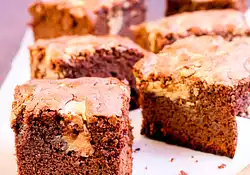
Best Peanut Butter Chip Brownies
Peanut Butter Chip Brownies recipe

Whole Wheat Indian Chapatis
Chapatis recipe

Blueberry Muffins with Nutmeg Topping
Blueberry Muffins with Nutmeg Topping recipe

Mom's Whole Wheat Blueberry Pancakes
Mom's Whole Wheat Blueberry Pancakes recipe
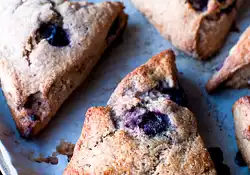
Dad's Berry Buttermilk Scones
Dad's Berry Buttermilk Scones recipe
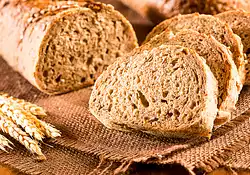
Marti's Whole Wheat Bread
Delicious homemade bread!
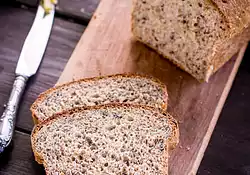
Whole Wheat Two Seeds Bread
Whole Wheat Bread recipe

Whole Wheat Buttermilk Pancakes with Banana Cream
Fruity Buttermilk Pancakes recipe

Mark's Eggless Pancakes
Mark's Eggless Pancakes recipe

Almost Whole Wheat Choco Banana Peanut Cookies
Almost Whole Wheat Choco Banana Peanut Cookies recipe

Oatmeal Chocolate Chunk Cookies
Oatmeal Chocolate Chunk Cookies recipe

Aloo Mathar Paratha (Sides)
The quintessential Indian-Singaporean meal accompaniment. Unfortunately, all too often it is made using highly processed white flour and margarine. Here, the parathas are made with whole-wheat flour (you could also try using spelt flour) and stuffed with peas and potatoes, for a lighter but more wholesome take on the original. Serve hot with yoghurt and herbs.

Delicious Whole Wheat Pita Bread
Delicious Whole Wheat Pita Bread recipe

Almost Whole Wheat Chocolate Banana Muffins
Chocolate Banana Muffins recipe

Awesome Ginger Spice Waffles
Ginger Spice Waffles recipe

Whole Grain Sourdough Pancakes or Waffles
Whole Grain Sourdough Pancakes or Waffles recipe
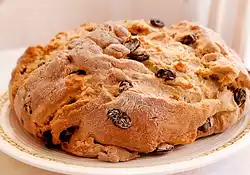
Honey Soda Bread
Honey Soda Bread recipe

Peanut Butter Chocolate Kisses (Healthier Version)
Sweets don't have to be always connected with high sugar, high fat and unhealthy. A few healthy twists, now you can enjoy these delicious cookies without feeling guilty at all.

Country Style Buttermilk Pancakes with Berry Sauce
Country Style Buttermilk Pancakes with Berry Sauce recipe

The Best Banana Bread (Vegan)
The Best Banana Bread (Vegan) recipe






